Passenger is caught smuggling 160 exotic animals including snakes, chameleons and frogs after travelling from Miami to Peru
- Four of the exotic animals were found dead after traveling in appalling conditions
About 160 exotic animals, including snakes, spiders and turtles, were seized at a Peruvian airport.
The animals were seized at Lima's Jorge Chavez International Airport.
They were found in the luggage of a passenger traveling from Miami to an unspecified Asian country, Peru's National Forestry and Wildlife Service (SERFOR) said.
Peruvian authorities found the animals in appalling conditions, almost suffocated, as they had been stored in medicine bottles, in plastic boxes containing tools and bolts, and even wrapped in cotton straws.
This undated handout photo released by SERFOR shows a frog after it was seized from a passenger at Lima International Airport in Lima

Several animals were internally protected by the Convention on International Trade in Endangered Species of Wild Fauna and Flora, including the map turtle (pictured)
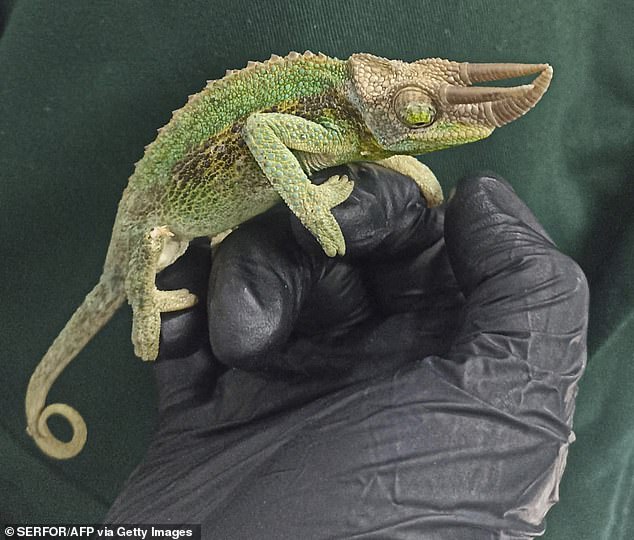
A Jackson chameleon found among the luggage the passenger was trying to smuggle
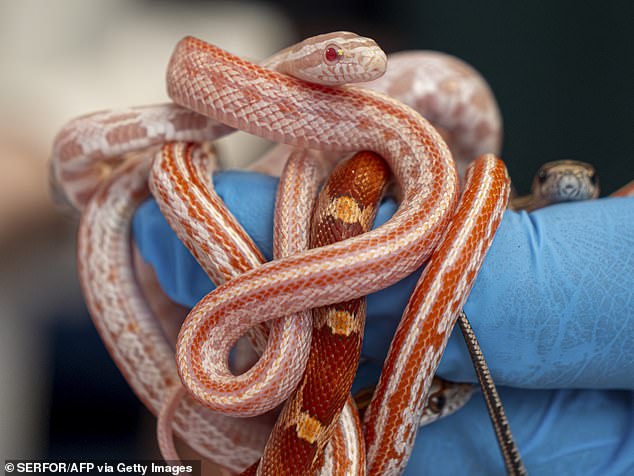
There was also a variety of snakes: 29 corn snakes found in a container of infant formula and 14 Cranwell frogs
The animals were found on November 17 in two suitcases, in the hold and in the carry-on luggage, of a Peruvian-American passenger.
It is understood the passenger intended to enter the animals illegally and later trade them in Asia.
SERFOR and agents from Lima's Technical Forestry and Wildlife Administration (ATFFS) found tarantulas of various species native to Africa, Panama and Brazil.
There was also a variety of snakes: 29 corn snakes found in a container of infant formula and 14 Cranwell frogs.
But there were also at least fifteen specimens of internationally protected species, such as the savannah monitor, Jackson's chameleon and the map turtle.
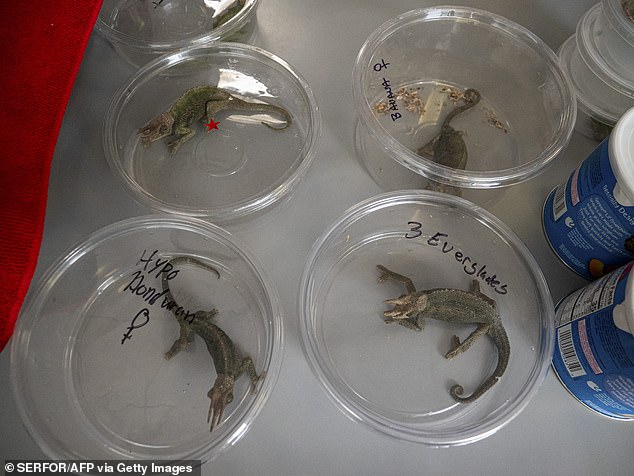
But due to the poor conditions in which they traveled and the lack of food, four animals were unfortunately found dead
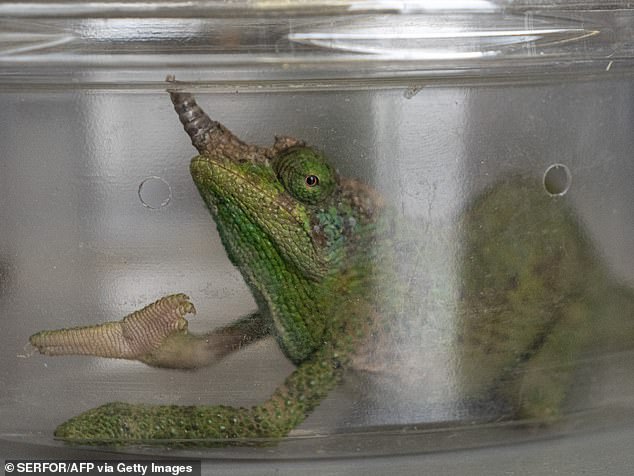
It is understood the passenger intended to enter the animals illegally and later trade them in Asia
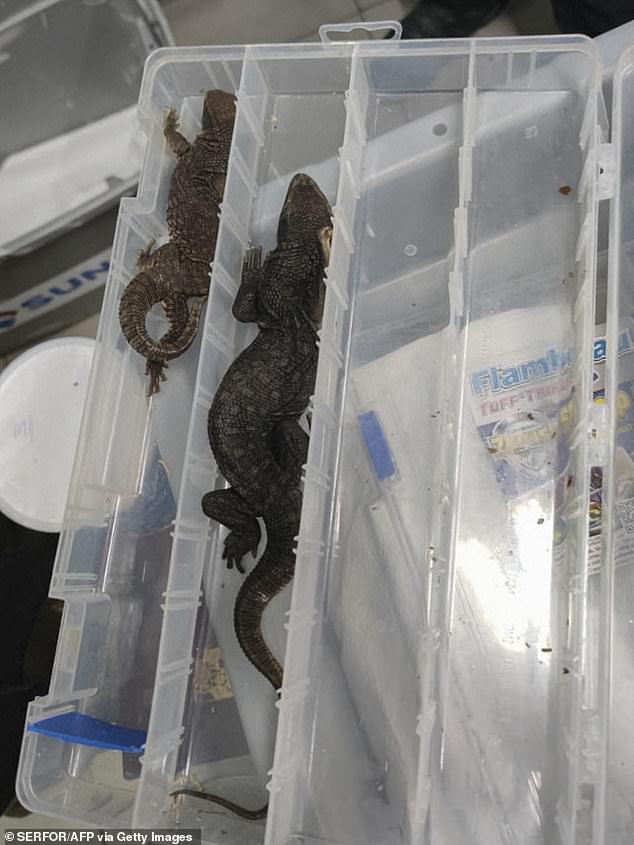
Peruvian authorities found the animals in appalling conditions, almost suffocated, as they had been stored in medicine bottles, in plastic boxes containing tools and bolts, and even wrapped in cotton straws.
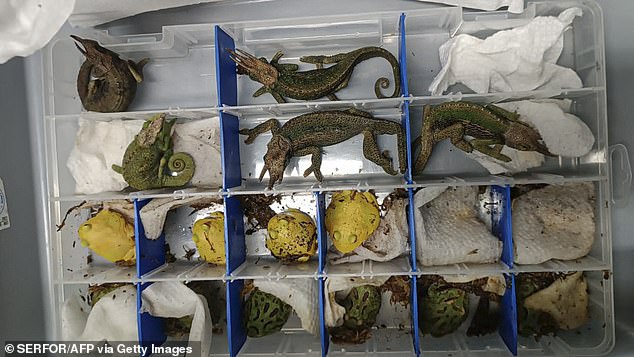
The animals were transferred to two specialized centers in Lima and quarantined under specialized care
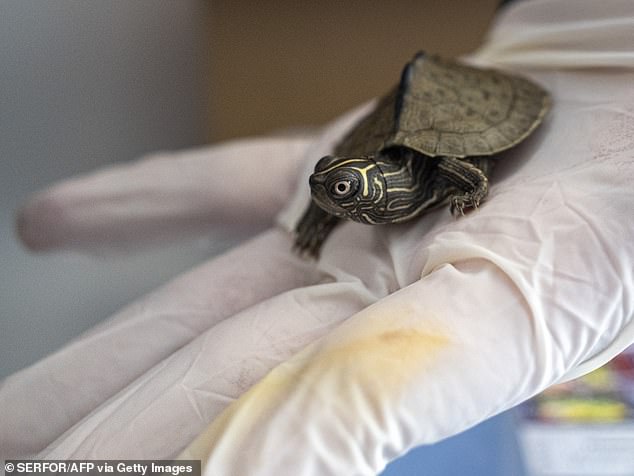
This shipment of animals is said to be worth tens of thousands of dollars and is believed to have been sold on the black market
The animals were transferred to two specialized centers in Lima and quarantined under specialized care.
But due to the poor conditions in which they traveled and the lack of food, four animals were unfortunately found dead.
This shipment of animals is said to be worth tens of thousands of dollars and is believed to have been sold on the black market.
It is estimated that the illegal trade in exotic animals worldwide generates 20 billion euros per year.
According to the United Nations Office on Drugs and Crime (UNODC), the illegal wildlife trade is classified as one of the largest and most lucrative transnational organized crime activities in the world, along with drug trafficking, human trafficking and arms trafficking.
